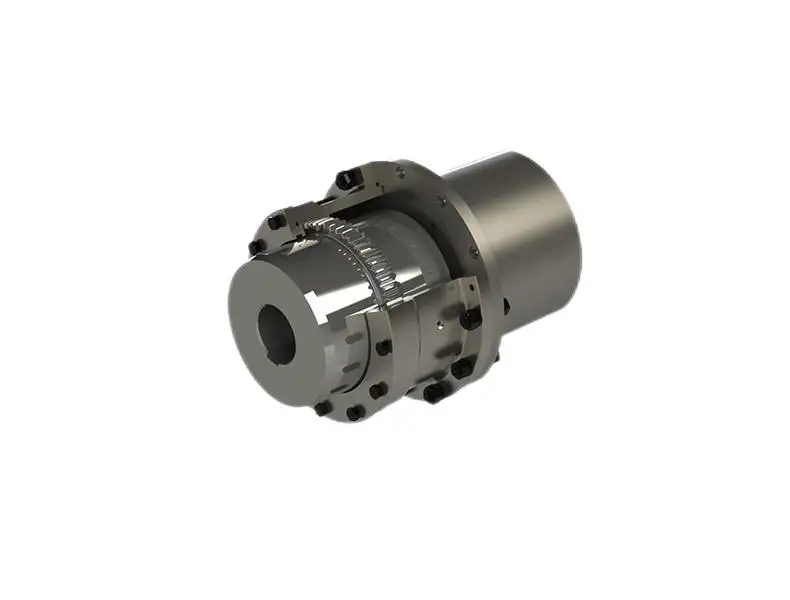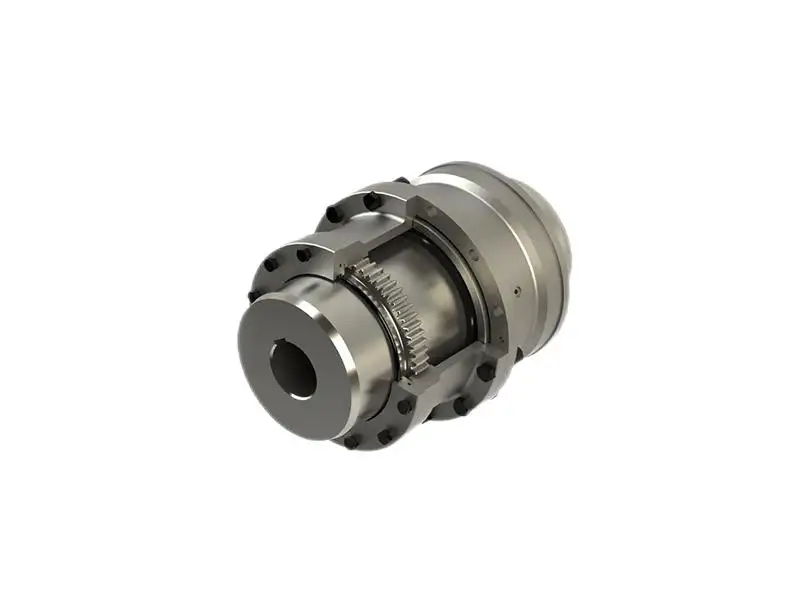Exploring Industrial Coupling Solutions for High Performance
In modern industrial systems, the choice of the right coupling solution significantly affects overall machine performance, durability, and maintenance requirements. Two of the most commonly used types are gear couplings and grid couplings. Each is designed to transmit torque, accommodate misalignment, and absorb vibration, but their internal structures and functional capabilities offer distinct advantages in different applications. Understanding the difference between these coupling systems is essential when optimizing high-torque power transmission setups.
Structural Design and Construction
Internal Components and Assembly
Gear couplings consist of two hubs with external teeth that mesh with internal teeth on flanged sleeves. These gear teeth are designed to accommodate angular misalignment and can handle high torque levels with compact dimensions. The engagement between the teeth ensures a solid connection that is well-suited for heavy-duty operations.
Grid couplings, on the other hand, use a serpentine grid spring made of high-strength steel that fits into grooves in the hub and sleeve. This grid flexes to transmit torque and absorb shocks. Unlike gear couplings, the grid coupling design disperses impact energy, reducing wear and tear on connected equipment.
Material Composition and Durability
Gear couplings are usually made from hardened alloy steels, providing exceptional resistance to wear and fatigue in harsh environments. The gear teeth are precision-machined for high efficiency and torque transfer, with many designs featuring lubrication systems to extend lifespan.
Grid couplings are generally composed of steel hubs and a flexible grid made from spring steel. This combination allows for a balance of rigidity and elasticity, making them ideal for applications that involve frequent start-stop cycles or intermittent loads.
Torque Transmission and Load Capabilities
High Torque Performance
Gear couplings are preferred for high-torque applications due to their rigid, positive engagement between mating teeth. They can operate in extreme conditions such as steel mills, paper machinery, and rolling mills, where maximum torque capacity and precise power delivery are required. Their mechanical locking ensures that power is transmitted without slippage.
Grid couplings also offer substantial torque capacity but typically not as high as gear couplings. However, their ability to cushion shock loads makes them excellent for dynamic systems with unpredictable loads. This feature helps protect connected motors and machines from sudden jolts or overloads.
Misalignment Tolerance
Both coupling types offer compensation for misalignment, but they do so differently. Gear couplings manage angular and axial misalignments through the sliding action of their teeth. While they can tolerate more misalignment than rigid couplings, excessive deviation can increase tooth wear.
Grid couplings, by contrast, have a more forgiving design that distributes the effects of misalignment along the flexible grid. This design not only accommodates angular and parallel misalignment but also reduces vibration and prolongs the life of connected components.
Installation and Maintenance
Ease of Installation
Gear couplings often require careful alignment during installation and may involve more steps due to lubrication requirements and tooth engagement. Specialized tools may be needed to achieve precise meshing, especially in applications with limited access.
Grid couplings are relatively easier to install and align. The flexible grid allows for simpler fitting, and most designs are split for easy assembly without moving the connected equipment. This can result in reduced downtime during setup.
Lubrication and Maintenance
Gear couplings typically require regular lubrication to ensure smooth operation and prevent wear on the teeth. Lubrication intervals depend on speed, load, and environmental conditions, making maintenance schedules more demanding.
Grid couplings are often lubricated as well, but the grid’s design helps absorb shocks and reduce metal-to-metal contact, which can extend the time between maintenance intervals. Grease fittings and split covers also facilitate quick inspection and service.
Vibration Damping and Shock Absorption
Vibration and Noise Reduction
Gear couplings are inherently rigid, which can result in higher vibration levels if not perfectly aligned. Their robust build means they’re optimized for strength rather than damping. Proper alignment and lubrication help mitigate vibration, but additional dampening measures may be necessary in sensitive systems.
Grid couplings excel in vibration damping due to their flexible grid structure. The grid absorbs and dissipates vibration energy before it reaches connected machinery, reducing noise and improving overall system smoothness. This feature is particularly useful in systems with variable loads or frequent operational changes.
Shock Load Management
In gear couplings, shock loads are transmitted directly through the meshed teeth, which can lead to increased stress and faster wear if not carefully managed. However, their robust build still makes them reliable under heavy and constant loading conditions.
Grid couplings handle shock loads more gracefully. The spring-like grid deforms to absorb sudden energy spikes and distribute them evenly across the coupling. This shock-absorbing feature not only protects components but also extends the life of the coupling itself.
Application Suitability and Use Cases
Ideal Industries and Machinery
Gear couplings are frequently used in heavy industries such as mining, steel processing, marine propulsion, and oil and gas. These industries demand high torque transfer, compactness, and strength, all of which gear couplings deliver efficiently.
Grid couplings are often found in medium-duty applications like pumps, compressors, and conveyors. They are suitable for systems with varying loads and misalignment issues, offering reliability without the need for frequent servicing.
Environmental Compatibility
In environments with high temperature or corrosive elements, gear couplings can be equipped with protective coatings and seals. These options make them adaptable to extreme conditions, especially when long-term reliability is a concern.
Grid couplings can also be used in harsh environments, but they are generally more sensitive to contamination. Protective covers help maintain their effectiveness and extend service life, particularly in dusty or dirty locations.

Cost Considerations and Lifecycle Value
Initial Investment vs Long-Term Benefits
Gear couplings may have a higher upfront cost due to materials and precision machining, but their durability and load-bearing capacity often result in a lower cost of ownership over time. When maintenance is properly managed, they can function for many years with minimal downtime.
Grid couplings are more cost-effective in terms of initial purchase and installation. They offer a good balance between performance and price, especially in applications where shock absorption is more critical than maximum torque.
Serviceability and Replacement
When gear couplings fail, it is often due to tooth wear or poor lubrication. Components can usually be replaced individually, but regular inspection is vital. Modular designs are available to simplify repairs and extend lifespan.
Grid couplings offer convenient servicing options. The split grid design allows for quick replacement of damaged parts without dismantling the entire assembly. This modularity reduces repair time and improves system availability.
Frequently Asked Questions
What is the main functional difference between gear couplings and grid couplings?
Gear couplings transmit torque through meshed gear teeth, making them ideal for high-torque and heavy-duty applications.
Grid couplings use a flexible spring grid to absorb torque and vibrations, offering better shock absorption in dynamic systems.
Which coupling type offers better vibration damping?
Gear couplings are rigid and may transmit more vibration if not perfectly aligned.
Grid couplings provide superior vibration damping due to their flexible grid structure.
Are gear couplings more durable than grid couplings?
Gear couplings are generally more robust and suited for extreme loads and environments.
Grid couplings are also durable but may wear faster in harsh conditions without proper protection.
How often should gear couplings and grid couplings be maintained?
Gear couplings require regular lubrication and inspection due to metal-to-metal contact.
Grid couplings also need lubrication but typically require less frequent servicing due to their shock-absorbing design.
Table of Contents
- Exploring Industrial Coupling Solutions for High Performance
- Structural Design and Construction
- Torque Transmission and Load Capabilities
- Installation and Maintenance
- Vibration Damping and Shock Absorption
- Application Suitability and Use Cases
- Cost Considerations and Lifecycle Value
- Frequently Asked Questions
- What is the main functional difference between gear couplings and grid couplings?
- Which coupling type offers better vibration damping?
- Are gear couplings more durable than grid couplings?
- How often should gear couplings and grid couplings be maintained?

